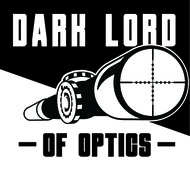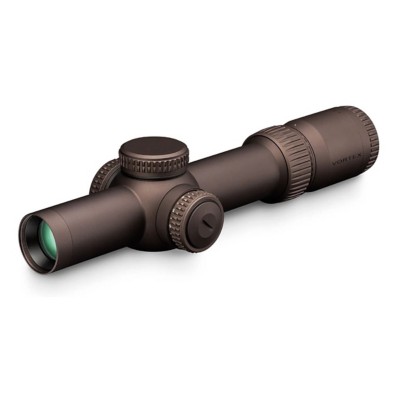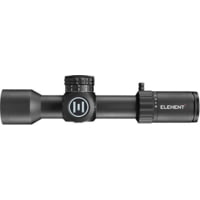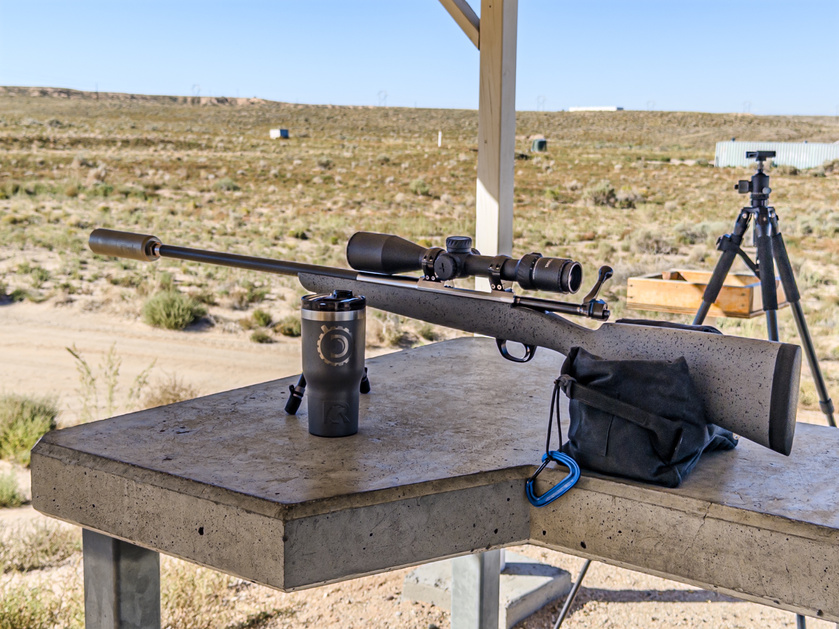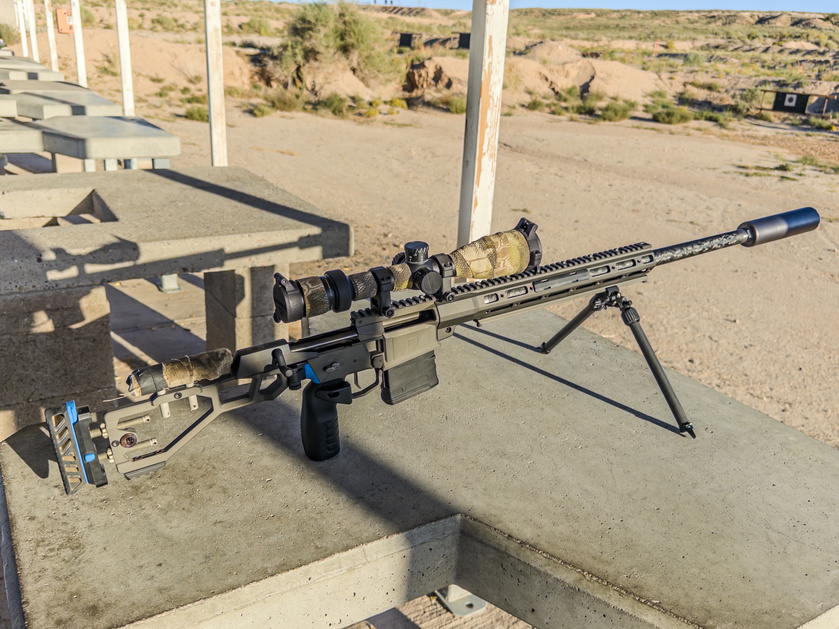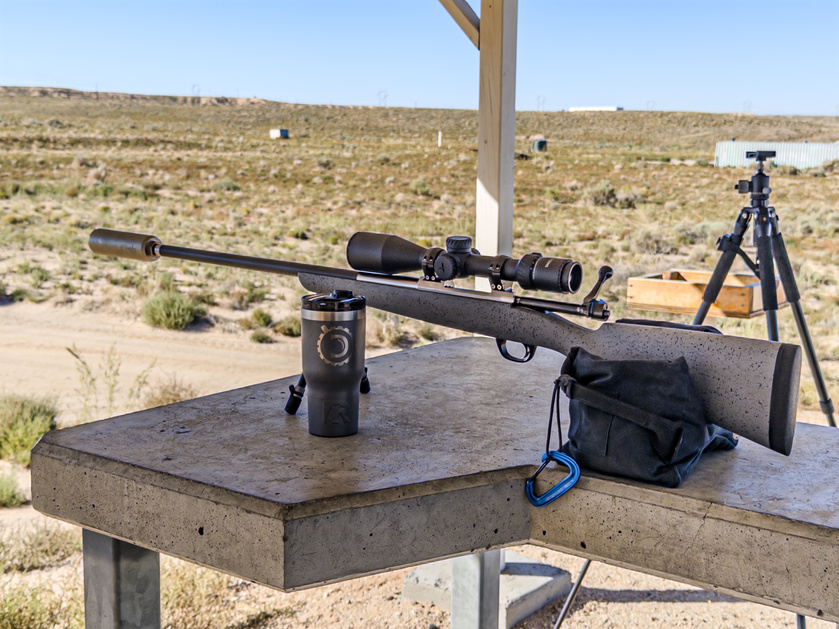Riflescope Type Classification
In the aftermath of SHOT, looking at different forum discussions, we seem to be getting into a little bit of a classification issue when it comes to different riflescope types. All sorts of terms get thrown around: LPVO, MPVO, Crossover, Mid-range, Long-range, Precision, Target, etc.
This confusion is not surprising. There is a lot of overlap between all these different configurations and nothing is clear cut. On top of that, it is not like anyone ever bothered to fully define them. I am as guilty of that as the next person, since I have talked about a few particular ones, but never really thought through the entire landscape. Let's give it a shot and let me know if this makes sense. I am going to first list the terms that come to mind and then keep revising this post with definitions as I think through them. Please offer your thoughts in the comments on what you think the definitions should be and whether you think additional terms should be added to the list:
1x Prismatics and RDS
Small Prism Fixed Power
Large Prims Fixed Power
LPVO
LPVO stands for Low Power Variable Optic and it is the easiest of the bunch to define. A riflescope with the magnification range tat goes down to 1x is it. If it works well on 1x, it is a good LPVO. If it does not, it isn't. I often use these as DMR scopes and they do crossover into a few other niches, but the default position of the magnification ring is 1x. I have a few of these here. If you have money to spend, Vortex Razor Gen3 1-10x24 should be on your list https://bit.ly/3w1Ah2T. If you can spend some cash and want the smallest package, that's Primary Arms PLxC 1-8x24 https://bit.ly/3Bn3951. If you want something that leans a little more in the DMR directions, Delta Stryker 1-10x28 https://annexdefense.com/delta-stryker-hd-1-10x28-rifle-scope-do-2517-1-10/. If you are new to LPVOs, Primary Arms SLX 1-6x24 with Nova reticle https://bit.ly/40LeLdt or one of the new SwampFox LPVOs with fiber reticles. I have a few LPVO recommendations (click on the recommendations banner on the right). Depending on how the scope is set up, these can have either SFP or FFP reticles.
Dangerous Game
This is another simple one. It used to mean a light, compact and durable scope of low power that can hold up to the recoil of large caliber hunting rifles. It still means that, but we can add more specificity to it. In the modern world, it is a lightweight LPVO with a high visibility SFP reticle. The reticle is typically a fairly simple pattern. The emphasis, again, is on excellent low power performance. The overall trend with LPVOs is to higher erector ratios. For a DGR scope, I am perfectly fine with a high quality 1-4x. The one additional quirk here is that while for typical LPVO applications, we do not care a ton about long eye relief, for a dangerous game scope, long eye relief is a good thing. Tract 1-8x24 is a good example here. Delta Titanium HD 1-6x24 and Stryker HD 1-6x24 fit the bill very well. Trijicon Accupoint 1-4x24 https://bit.ly/3utRSQu or 1-6x24 https://bit.ly/3OvH0Zo with a post reticle would likely be at the top of my list. Interestingly, the newly announced SFP version of the Primary Arms PLxC 1-8x24 might become the go to choice for this. It has very high build quality and spectacular 1x performance. I should put it onto a lightweight magnum and see if it survives.
MPVO
This is likely to be a more controversial definition than most. To me, this is a FFP scope with low end magnification of 2.5x or less, locking or covered windage turret and zero stop elevation turret. Sidefocus knob is preferred. Reticle should be an illuminated tree type of some sort. This scope is equally likely to be dialed with as held with. It has to work well with a clip-on, so I want the low end FOV to be 8 degrees or wider and I want the overall length to be moderate. 12.5" or less would be great. The reticle has to work well on all magnifications. The hold marks on the tree reticle have to be usable from about 7x on upward. Top end magnification is not critical, but ideally I want it at 10x or more. Objective lens diameter should be in the 32 to 44mm range. Smaller diameter objective scopes are easier to make short. Weight has to be moderate as well, ideally under 25 ounces. These scopes are excellent for DMR use on accurate semi-autos. They work equally well on compact and accurate bolt action rifles. Arguably the purest expression of the MPVO genre is March 1.5-15x42 and it currently sits on my 16" barreled 8.6BLK bolt action Fix: https://bit.ly/4bjm15X The best budget option we have for the time being is Athlon Helos BTR Gen2 2-12x42 https://bit.ly/40i1ABe The new Leupold Mark 4 2.5-10x42 is likely to be a good contender as well, although the reticle is a little suspect https://bit.ly/3StVvhy If you are a MOA shooter, Burris' new 2.5-12x42 Veracity PH, while aimed at hunters, is a very strong offering for this category as well https://bit.ly/4939QII
Tweener
Tweener scope is a term I have been using for many years. Long enough where I do not know whether I coined it or whether I lifted it somewhere else. These are smallish SFP scopes with 32 to 38mm objective diameter that were originally meant for eastern hunting, but lend themselves surprisingly well to a variety of applications. They are a perfect case of "less is more". While we tend to think of them as short range numbers, I shot my first elk with a muzzleloader wearing the now discontinued Vortex Razor HD-LH 1.5-8x32 at a bit over 300 yards. The fun part was that the guide who was with me, also had a muzzleloader with him. We ended up getting back to the truck with a field dressed elk and two loaded muzzleloaders. Rather than drive with them, he suggested a simple one shot competition. We located a rock around 500 yards from us. Whoever got closer to the rock, won. He had a fancy Gunwerks muzzleloader and a 6-24x scope with exposed elevation turrets. My muzzleloader has a fancy Arrowhead barrel on an Encore action, so not too shabby either. He got close. I hit the damn rock. Not bad for a couple of muzzleloaders in 15mph shifting wind. Tiny scope with "only" 8x on the top end did not hinder me one bit. This is not a popular scope category, but I always wonder why people do not use these more with thermal clip-ons. I do. On the low end are the ~$200 Vortex Diamondback https://bit.ly/3SGMWBb and Burris Fullfield II. There is an update coming from Burris as well. Leupold's original 2.5-8x36 was probably my inspiration for defining this category a couple of decades ago. It still lives on in a slightly refreshed form: https://bit.ly/3EV1hTx
If I ever start an optics company, I'll bring back that Razor HD-LHT 1.5-8x32 except with an illuminated dot.
Crossover
This is another category that is somewhat arbitrary, yet fairly self-explanatory. These are the riflescopes that almost equally comfortable on western hunting rifles and on competition rifles. The purest expression of the genre is likely Vortex Razor HD-LHT 4.5-22x50 https://bit.ly/41uPd5v. For this category I am looking for a FFP scope that is under 30 ounces in weight. Top end magnification of 15x or more. Bottom end magnification of 5x or less. Illuminated reticle of either tree or scale type. Overall length is not critical, since I am not hugely concerned with clip-on use, but a something of moderate length is not a bad idea. Zero stop elevation turret with rev counter paired with a covered or locking windage turret. Elevation turret lock is a good thing to have, but not strictly speaking critical. Burris XTR3i 3.3-18x50 https://bit.ly/3XVF8Ld and Delta Stryker 3.5-21x50 https://annexdefense.com/delta-stryker-hd-3-5-21x44-rifle-scope/ are other good examples of what I mean here. The newly announced Leupold Mark 4HD 4.5-18x52 should be a contender as well, but I need to spend some time with it before I make recommendations https://bit.ly/42wNDAo
Traditional Hunting
This category might be unexpectedly controversial because hunting is so different in different parts of US. It can be a 50 yards shot in the wooded areas of the Eastern seaboard or a 500 yard shot in the mountains of Wyoming. I lean toward the Crossover category above as the better choice for long shots out West. Traditional hunting scope, to me, lean toward moderate magnifications and distances that are largely within the MPBR of the cartridge. Historically, it was a 3-9x42 or 2.5-10x42 design with a simple-ish SFP reticle. Some people still preferred FFP reticles. I can go either way on this one. Some of my favourites here are SWFS 3-9x42 (FFP), Delta Titanium HD 1.5-9x45 (SFP), Vortex Razor HD-LHT 3-15x42 (SFP) https://bit.ly/49tk3xX , Leupold VX-5HD 2-10x42 https://bit.ly/49q0xCu , Trijicon Accupoint 3-9x42 (SFP) https://bit.ly/49tk3xX , Trijicon Accupoint 2.5-10x56 (SFP) https://bit.ly/42v7MXz. For these designs, I want low end magnification to be no more than 3x. Reticles have to work well on all magnifications. Duplex and #4 reticles both work well, but a simple mil-hash reticle like SWFA and Vortex Razor have are a good idea. Traditional MilDot with good illumination works well here.
Generally, illumination is not required, but nice to have.
General Purpose Practical Precision
This is typically a FFP riflescope with a 50mm or greater objective diameter. The conventional wisdom here would call for top end magnification of 20x or higher, exposed elevation and windage turrets of 10mrad or more travel per turn and a fairly sophisticated reticle. This category overlaps with crossover scopes above and long range precision below. On the low end of the magnification range, I really do not want go above 6x and keeping it at no more than 5x is better. Overall elevation adjustment range does not have to be huge. This is not a scope that has to perform ELR heroics of all sorts, although quite a few of these do end up pressed into odd applications (hence "general purpose" ) Depending on the price range, I like to have reticle illumination, but for reasonably inexpensive models I can live without it. I do want to be able to use the reticle (as a simple aiming pattern, not the tree) on low power, so an ultra thin design is not ideal here. If money is no object, S&B Ultra Short 5-20x50 with DTII+ turrets and MSR2 reticle is very hard to overlook https://bit.ly/3usGynQ On the more budget side of things, Tract Toric UHD 4-25x50 is an interesting option, especially if you do need the adjustment range https://tractoptics.com/toric-4-25x50-34mm-mrad-elr-rifle-scope. Personally, I can easily live with a 3-15x50, but it seems like 20x or more has become the market standard. To that end, if equipped with a reasonable reticle, many larger scopes fit the bill here, like the Element Theos 6-36x56 https://bit.ly/3t2MMtn and Leupold Mark 5HD 5-25x56 https://bit.ly/49s2sX3
Long Range Practical Precision
This is a little bit like the category just above, except these are almost never used for shooting on low power and I do not think I have ever seen one used below 8x. Most of these scopes are large and heavy. Most of the shooting with these happens on 15x and above. Sometimes you will dial down when scanning and looking for something. Thinner reticles are common in this category. Exposed elevation and windage turrets are nearly default. Adjustment range usually sits at 30mrad or higher. These scopes tend to be heavy. The better ones out there have excellent optical performance across the entire elevation adjustment range. Traditionally, these have been the excellent 5-25x56 designs starting with the S&B 5-25x56 https://bit.ly/3uuJDnq and branching out into a good number of options. Tangent Theta 5-25x56 https://bit.ly/3uvxqim is probably the best this configuration has to offer. More recently, 7-35x56 and 6-36x56 has become more commonplace with S&B https://bit.ly/45edsox and Vortex Razor Gen3 6-36x56 https://bit.ly/3Sa6M87 arguably leading the charge.
Short Range Target
This is not my field, to be honest with you. Still, this usually involves trying to shoot very tiny groups or hit very tiny targets all at comparatively close ranges, usually inside of 200 or 300 yards. For some distances, it is shorter than that. However, the angular size of the targets you have to hit or groups you have to make is astoundingly small. Because you are looking through comparatively little air, this is where you can work with a LOT of magnification. Some disciplines have weight limitations, so lighter weight of fixed power scopes is often an advantage. For target shooting, if you have the funds, something from March labeled "High Master" is your best bet, the 48x52 fixed power, for example: https://bit.ly/3OGI0K6 Of the more reasonably priced options, Sightron has a couple of fixed power scopes (36x45 and 45x45) and several excellent variable scopes in SII and SV lines that do very well in this discipline. Thin reticles are a benefit here, so SFP designs pretty much own paper shooting. These scopes have exposed elevation and windage turrets with very fine adjustment granularity being an advantage. 1/8MOA is most common since most of these scope are in MOA. If you are a mrad shooter, 1/10mrad clicks are worthwhile.
Airgun Field Target competitions are sorta "short range target", but deserve their own section.
Long Range Target
This is kinda like the section above except you are looking through a LOT of air since the targets are far away. Given that air quality can be all over the place, you want a variable design, usually something that goes above 40x. Again, this is where March might be king of the hill with the new 8-80x56 High Master https://bit.ly/4bxMuwA, but there are reasonable options out there from Vortex, Delta, Sightron, Nightforce, etc. F-Class guys seem to live on 40x, but depending on what mirage is doing, you want to have the ability to adjust magnification.
Field Target scopes
This category is an odd mix of short range target and practical precision. You shoot at very tiny targets that are not that far away. The problem is that you shoot with tiny airgun pellets that have a lot of drop. Those tiny targets are sitting at unknown distances. Field Target competition is, to be honest, a blast and is probably the fastest growing precision shooting discipline we have. F/T scopes are calibrated at particular distances using the side focus turret. During competition, you use the side focus to measure the distance to the target and dial for trajectory. Shallow depth of field is a huge benefit for this, so high magnification helps. It is also very important for the optomechanical system to be athermal so that your side focus calibration does not change with respect to ambient temperature.
Think High Power Sightrons and Marches.

